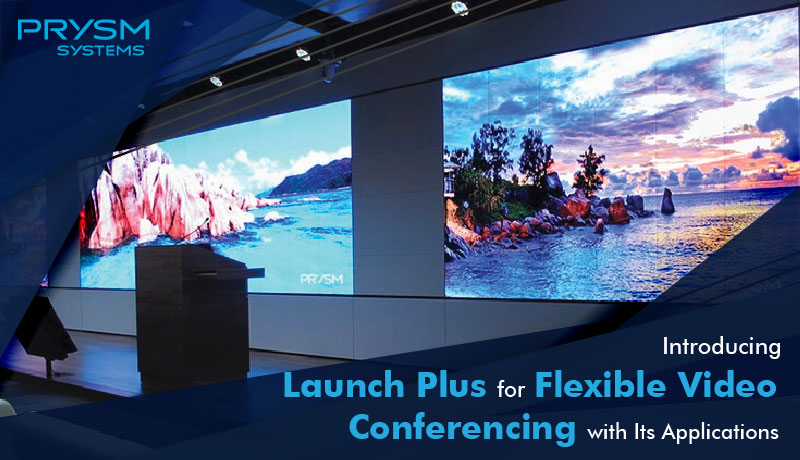A Video wall display has become significantly popular in recent years. With different technologies emerging every year, understanding the ways of using them can be complicated. This article is a guide to understanding video wall displays and how to get the best output.
Having a video wall is on the bucket list of the majority of the people. With a massive screen displaying information and media, you are sure to capture the attention of every viewer. Rather than just a piece of attraction, video wall displays offer a lot more. Without a doubt, these video walls look appealing, but getting the best outcome from them is a task in itself.
Even before you get this display, you have to ask a simple yet intriguing question: ‘Do you need this video wall display?’ There are plenty of uses for this screen. Whether you want it in your corporate office or a retail showroom, you need to find out the real use of it. As the possibilities of using it are endless, you have to make sure that you require these.
If you have reached this part, then you have already decided that you are going to get this piece of technology. Considering that factor, here is a quick guide on the things that you have to look at in an LPD screen.
-
Video wall display Screen Size and Resolution
No matter what type of screen you are getting, the first thing to decide is the size of the screen. As a video wall display are usually big in size, you have to make sure that you get the one that fulfills your requirements. Moreover, you should also be looking at the resolution as it will directly impact the display quality. Screen size and resolution work together to provide a high-quality projection. Keep in mind that a large screen with low resolution will never be effective. Make sure to get a greater resolution to get the quality that you need.
-
Budget
Purchasing requires a set amount of funds especially when you are going to invest in an LPD video wall. Before you make up your mind to get one of these, you have to decide your budget or buying capacity so that you can limit yourself to any particular model. Keep in mind that getting a video wall display is a big investment but will provide you with great returns in the long run. Find out your budget and look out for the available options in the desired budget to get the right model.
-
Bezel Size
Though it is not a mandatory part, it should surely be considered when you are investing your money. It may not seem a much important factor, but bigger bezels tend to distract some of the people from the main content making the screen less effective in conveying the message. The newer models of the video wall display come with bezel-less designs. With minimal bezels, the screens can become highly effective in viewing.
The above were the factors that you have to decide before you invest in a video wall display. Even though they will help you in getting the best screen for your needs, still you have to be attentive to get the most out of them. Many people invest in their hard-earned big screens, but they cannot use them to their full potential. To make sure that you do not make the same mistakes, here are the things that will help you in getting maximum results from the interactive display.
Understanding the Capabilities of the Screen
A screen is majorly used for projection. However, technology has been advancing rapidly and made screens much more than just a tool for projection. With features like interactive gestures, smart displays, there is no limit to what these LPD video walls can do in dynamic presentations. However, if you are only using them just for the projection, then you are underusing them. Make sure to explore what these screens have to offer and use their technical capabilities to your advantage.
Create Content for the Right Screen
A screen will project anything that it is asked to. On the other hand, if the aspect ratio of the screen does not match with the content, then either the content will be cropped or stretched to fit the screen. Either way, you are going to compromise with the quality of your content. Before you create the content piece, you should consider the aspect ratio of the screen. In most cases, it is going to be 16:9, but certain screens have different dimensions, so you have to keep that factor in mind if you want to get the best results from the screen.
Placement of the Screen
When you are getting video walls, then you have to make sure that you have the optimum space for its placement. Though it is a basic factor, there is much more to it. When we talk about space, then it includes the size of the wall, the room where it will be placed, or whether you are going to place them indoors or outdoors. Outdoor placement may not have space issues, but there is another factor added to this: Brightness. When you are using a video wall display outdoors, then you have to make sure that the screen is bright enough to display the content. If the screen is placed under direct sunlight, then it has to be extremely bright to get the best results.
Conclusion
With all the factors mentioned above, you will get the right LPD video walls that will serve your purpose. Apart from that, following this guide will ensure that you get the best results from your screen. Keep in mind to never limit yourself to just one purpose. These video walls have tons of features and can serve many uses. Always try to find out different and unique ways to make your content more interesting with these screens and you will never be disappointed.












